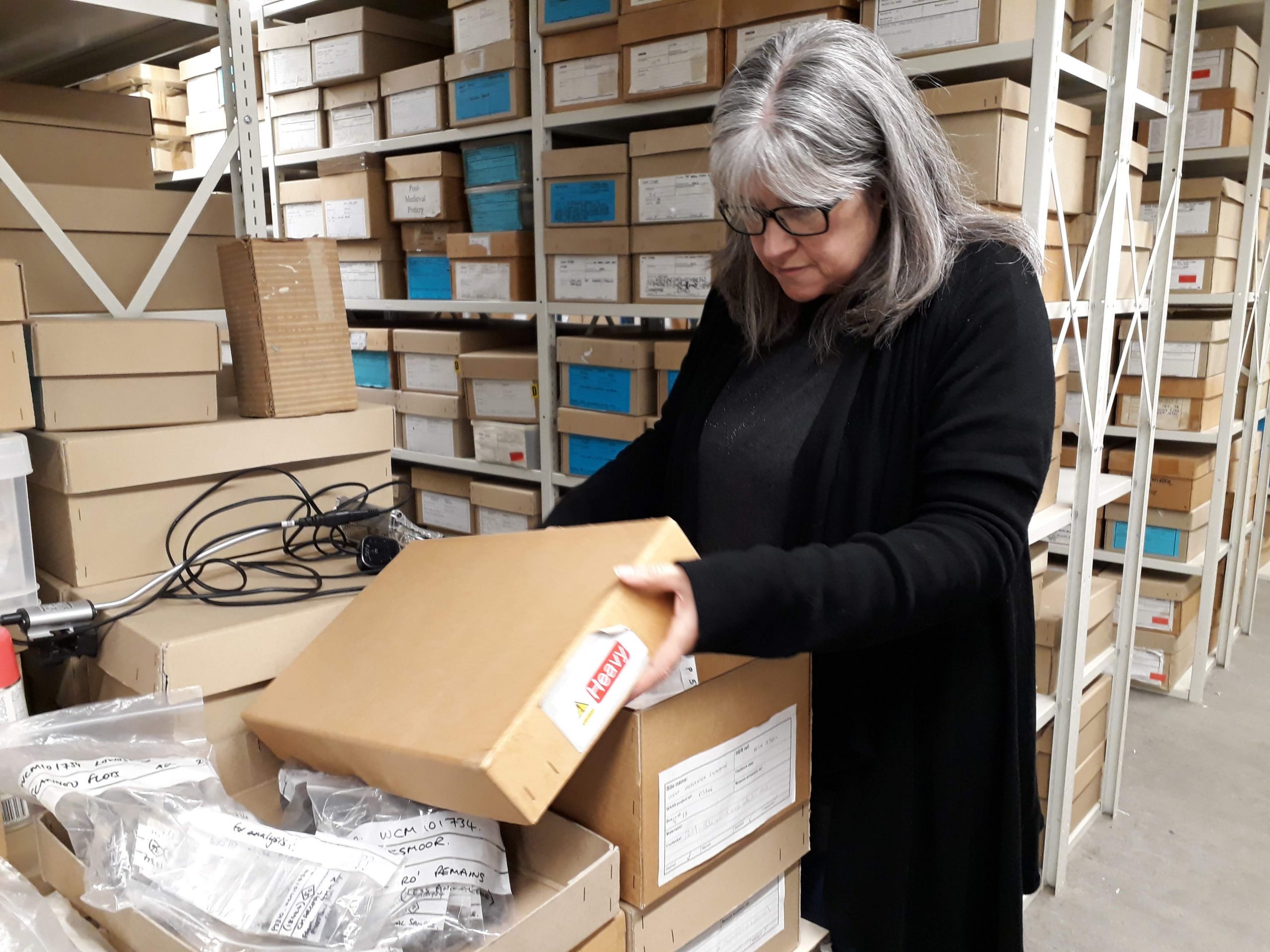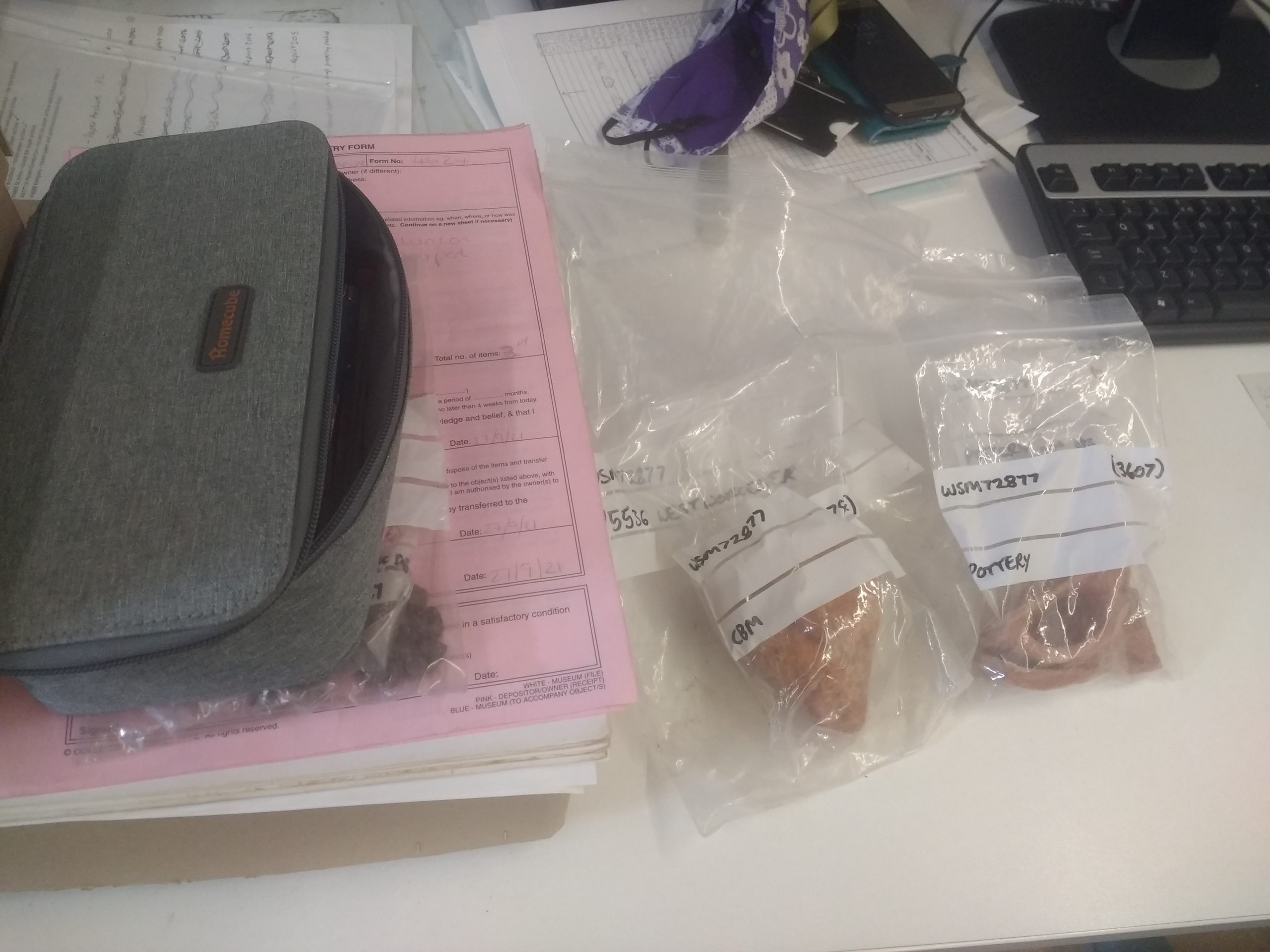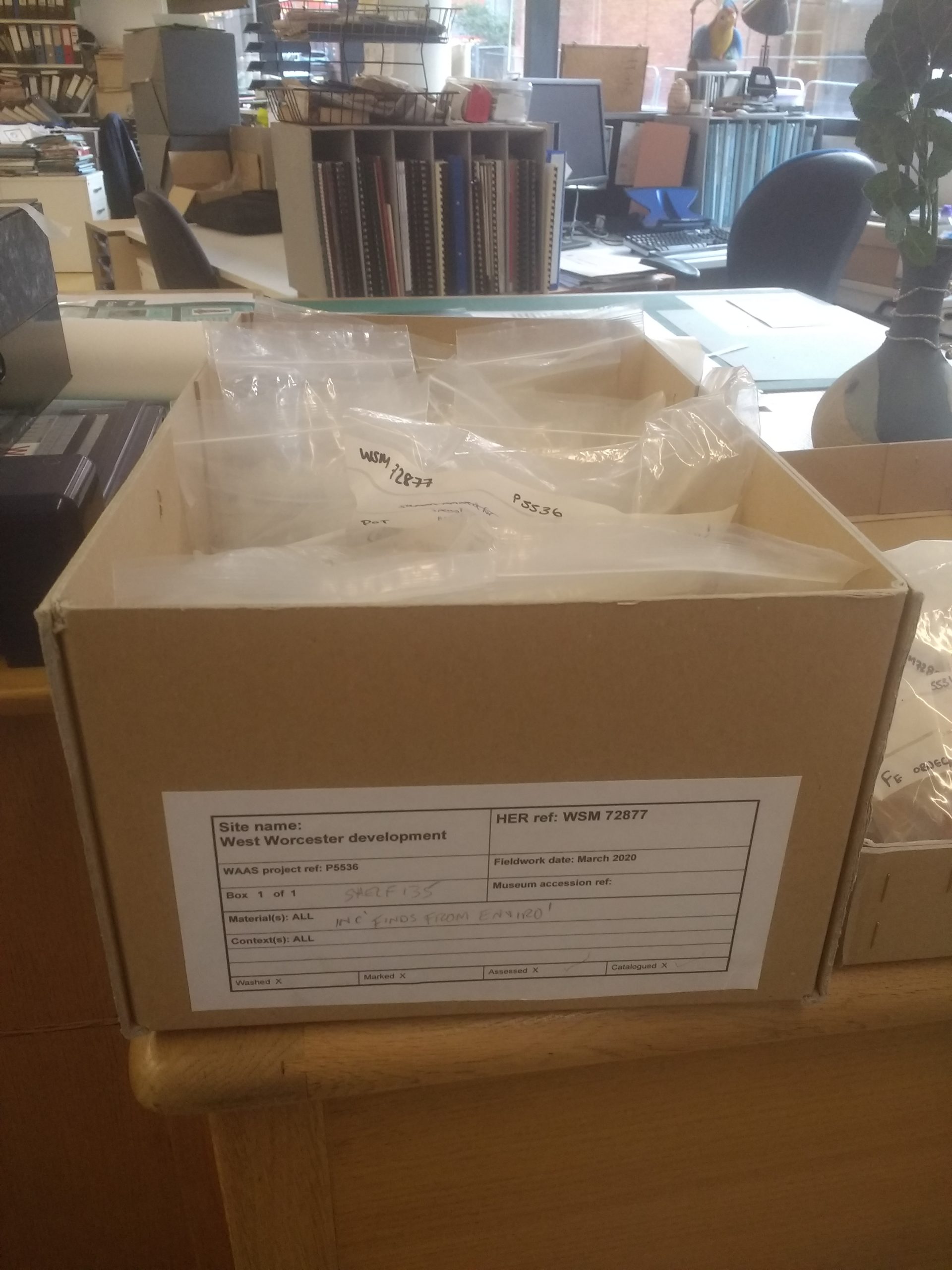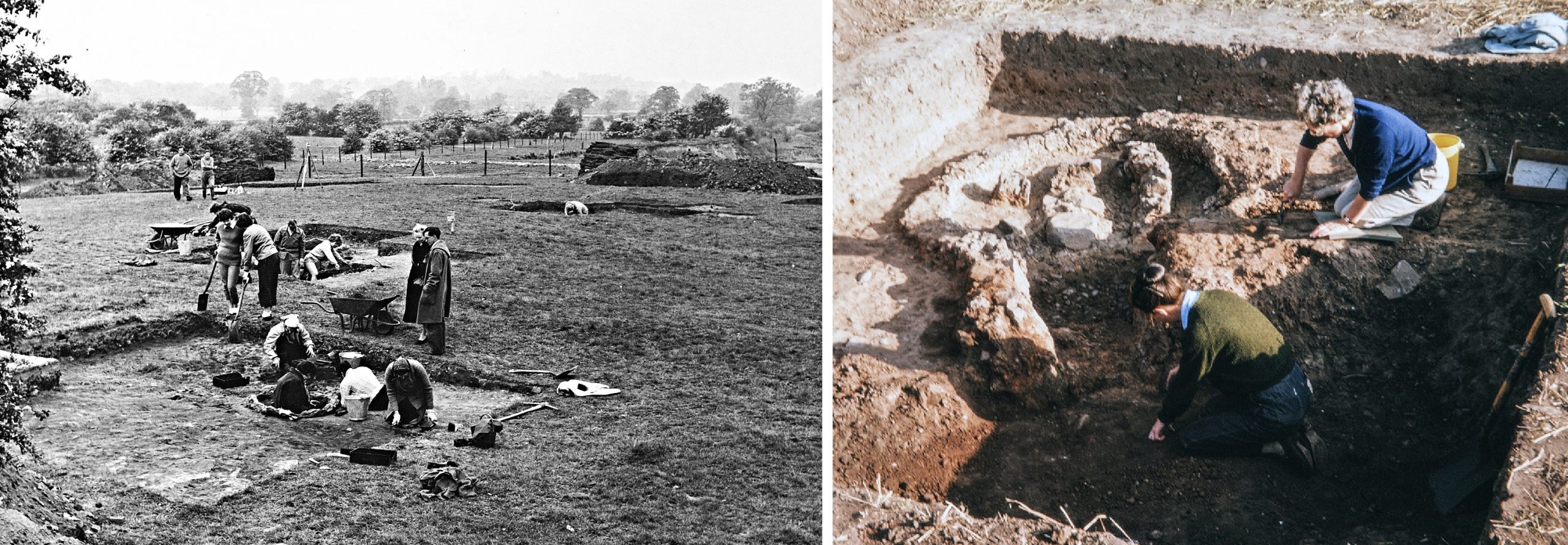Introducing Our Archaeological Archivist
- 27th November 2021
It’s Explore Your Archive week, and we take the opportunity of sharing lots of items from the archives during the week, and provide an insight into what we do. We are a joint archive and archaeology service, and our archaeology side has archives too, in a slightly different way to our Record Office side. Kerry Whitehouse is our Archaeological Archivist, and began 18 months ago. We asked her to explain a little bit about what she does and why archaeological archives are so important.

 How did you come to be Archaeological Archivist?
How did you come to be Archaeological Archivist?
While undertaking my undergraduate degree in Archaeology and Heritage, I worked with a freelance archaeologist in Worcester for a time learning the ropes. I also volunteered on a research project digging up a village on the Welsh borders for several years looking for an Augustinian priory. While working on a contract in Worcester over 10 years ago digging the castle ramparts in a howling wind and horizontal rain, I made up my mind to look at working in museums. I applied for a traineeship post at the medical museums in Worcester in 2013 which was funded by the Heritage Lottery Fund and ended up working there for 15 months. The traineeship also sent me on a post graduate course with the Ironbridge Institute in Heritage and Identity. While in the traineeship, I attended a day’s course in the compilation of archaeological archives, which led me to think about how I could still be involved in archaeology without getting wet!
I still work in museums – I am a Curatorial Officer for Museums Worcestershire specialising in collections and documentation, and it has been my background in museums and archaeology that has led to having a foot in both camps.
What is an Archaeological Archivist?
An Archaeological Archivist is a person who sends finds and the paperwork generated by fieldwork to a museum for curation and to be looked after. The museum can use these archives to display and inform people about the history of human activity of where they live and visit.
An Archaeological Archivist also sends digital data generated by archaeological projects to a digital repository (ADS) that can be curated and cared for and is open access for all. This means that it is kept safe (digital information is at risk from being out of date as a recent Digital Preservation blog explains), and also is freely available to the public and other archaeologists.

What do you do?
At the beginning of every project, I activate two forms:
- One is a Data Management Plan which basically lists the types of data that will be generated and outlines how and what we are going to collect, what should be selected and what is not selected and why.
- The other form is a Selection Strategy which sets out what we will be selecting to send to the museums in finds and paper archive. Museums get this form towards the end of the project so they can comment on what it is that they want. The reason why we do this is because museums are stuffed to the gills with all manner of objects and archives, to select makes sure that the archive properly demonstrates the nature of the site archaeologically and objects that are out of context are generally taken out unless they are of special interest.
I notify museums of impending fieldwork by so that they are aware that an archive will be coming their way soon. We sometimes receive a museum accession number which needs to go on all aspects of the archive so that they can find it in their stores and it ties into their documentation.
I compile the digital datasets for archiving to ADS (Archaeological Data Service) by selecting images, survey data and database data from finds and environmental analysis – I then send the dataset to ADS for uploading.
I gather the physical archive together and catalogue it, creating box inventories, listing the paper archive and creating indexes for each project. Where museums have commented on selection, we can remove the agreed discarded material at this point. It all gets signed off and we can then take it to the museum.
 What do Archaeological Archives contain?
What do Archaeological Archives contain?
Archaeological archives contain finds (the objects archaeologists uncover), environmental samples, drawings and plans, site registers and site recording sheets, the report and the initial written scheme of investigation. Some archives can contain human remains – this has a different process that involves licences and discussions with museum boards before these are agreed to be accepted.
Why are archaeological archives so important?
Keeping archaeological archives is important, as they are the product of fieldwork which is essentially destructive – meaning you can’t go back to dig the site again, as you only have one shot at it. So all the data that is generated needs to be looked after in perpetuity for future researchers and as an archive of what happened on that site many years ago. It helps museums to also interpret for visitors and engage people on the history of their locality.
What are the challenges?
I started the role at the beginning of lockdown and it has been challenging learning how the unit works remotely, but also putting into place new systems of working. Lockdown has also meant the museums were closed while we were still digging. Some museum staff were furloughed and some were not, so when sending out notifications of fieldwork about to start, not many got back to me, which is understandable. Museums are all under immense pressure of lack of space in their stores too, which is why we select, but it’s also problematic when some museums have closed their stores to archaeological archives due to a lack of space and, sometimes, due to a lack of archaeological expertise resulting from funding cuts.
Anything particularly interesting that you have come across over the past 18 months?
I have inventoried what feels like a vast amount of Roman pottery so far – why did the Romans throw so much away?? Actually going through some the backlog projects yet to be archived has been fascinating. We have a couple of sites that will be making their way to Museums Worcestershire soon that provide a great look at the cross-over from Iron Age settlement to Roman, and this gives us valuable information for better understanding the Roman landscape in Worcestershire.

Excavations at Hartshill (left) and Kay Hartley excavating at Mancetter Broad Close (right). Photos from the archaeological archive – copyright of Warwickshire County Council
Read about a recent project we undertook to make an archaeological archive available – Mancestter-Hartshill Pottery Kilns. A significant Roman site, excavations took place 1960-72 and 1983 and 1984. Historic England and other bodies provided funding to make the archive accessible, and we carried out the work on their behalf from 2018-20. This has been completed and online on ADS.
Nice to know where you are now Kerry and what an interesting job you now how! Brst wishez